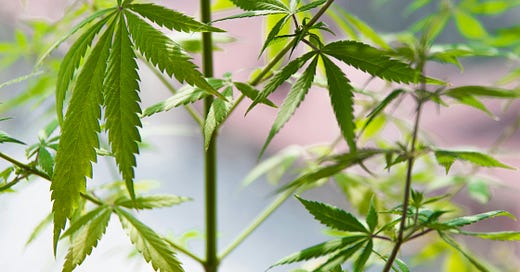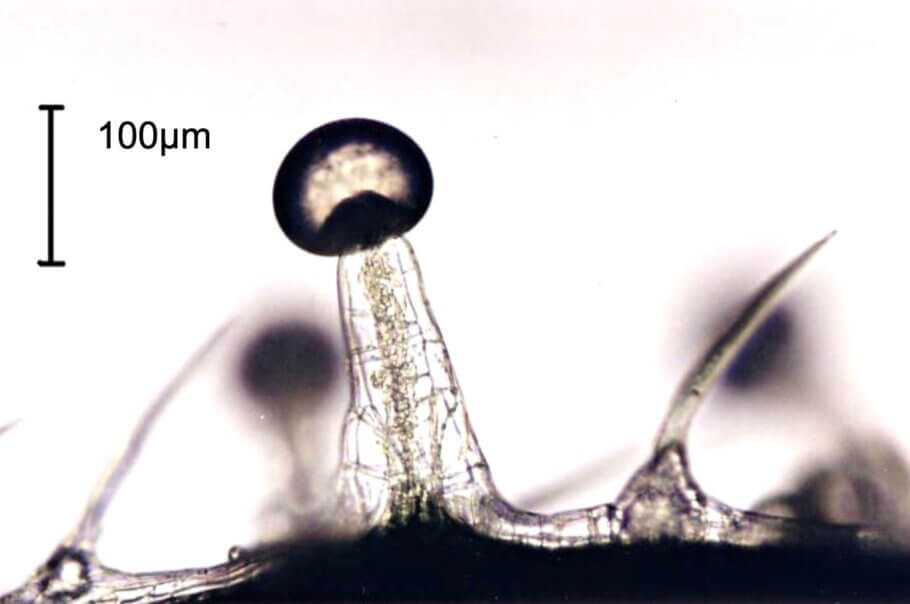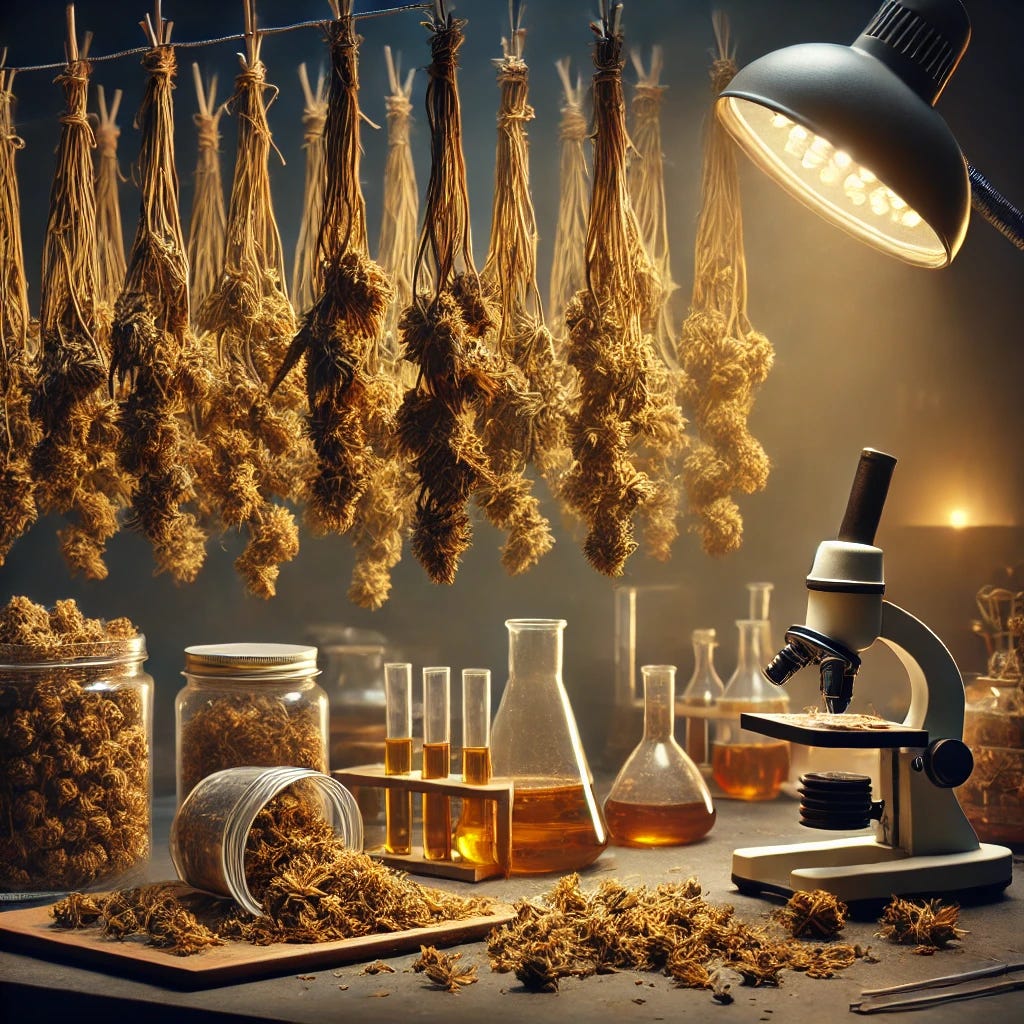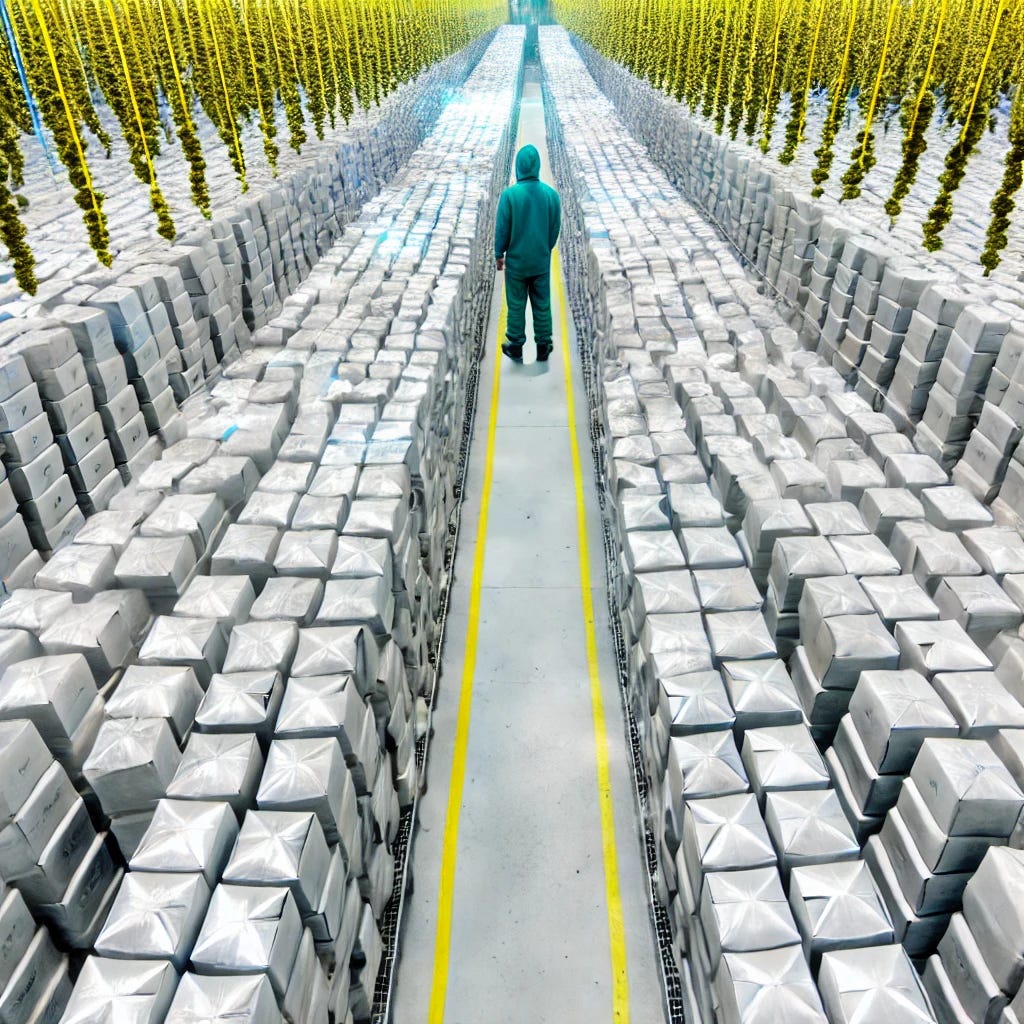The Hidden Chemistry of Cannabis: Your Buds Are Transforming While You Wait
A new study sheds light on the fast-paced changes of cannabis.
Understanding the Stability of Cannabinoids: Insights from a Recent Study
Cannabis science is advancing rapidly, and as thousands of new studies come out each year, they are shedding light on the complex chemistry of cannabinoids and the way that they transform.
Banana Ripening: You have surely noticed how bananas start off green, then turn yellow, and finally get those brown spots? This is a chemical process that we called ripening, but you may not know that it is driven by a natural hormone called ethylene. As bananas ripen, within the fruit starches convert to sugars, making them sweeter and softer. This transformation is similar to how cannabinoids change form over time, with huge changes happening that impacts their effects and properties.
Milk Spoiling: Now, think about milk. Fresh milk is nutritious and delicious, but leave it out for too long and it turns sour and clumpy (Naturally, we must then make sure it’s foul enough by sharing the smell with anyone around). This happens because bacteria start breaking down lactose into lactic acid, changing the milk’s composition and making it undrinkable. Not far off this example of milk, cannabis undergoes chemical changes that can affect its potency and flavor over time, though not quite toward something necessarily bad.
In gratitude for supporting my work, paid subscribers get early access to all publications, access special content, and soon - free invitations to live Q&A Zoom webinars. And those subscribing for the year, a signed copy of my book for free!
A recent study, called "Comparison of decarboxylation rates of acidic cannabinoids between secretory cavity contents and air-dried inflorescence extracts in Cannabis sativa cv. ‘Cherry Wine’," just came out this week, and it provides interesting insights into how processing and storage affect the chemical profile of cannabis. Considering that cannabis is well on its way to becoming a mainstream part of normal modern life, and almost all cannabis that is sold to buyers is stored for some duration of time, in some container, before it is taken home, it seems essential to grasp what is happening during these times of transition - to translate the findings in this paper into practical knowledge for both industry professionals and the public. Let’s jump in and decode what this means for you and our beloved botanical buddy.
The Magic of Decarboxylation
Cannabinoids exist in two primary forms: acidic (like THCA and CBDA) and neutral (like THC and CBD). The acidic forms are typically more prevalent within the plant when it grows, and the neutral forms have been the popular forms for human consumption, at least historically.
Side note: After dedicating 60 years to studying the neutral forms of cannabinoids, the late Dr. Raphael Mechoulam, often referred to as the "father of cannabis research," expressed excitement before his passing about the next frontier in cannabis medicine: exploring the medical potential of the acidic forms. One such acidic molecule, oleoyl glycine, was of particular interest, as you can see from an older email exchange I had with Dr Mechoulam:
The transformation from acidic to neutral forms, known as decarboxylation, is crucial because it affects the way that the compounds interact with the body (how and where they can go) when consumed. Neutral cannabinoids are more active and have different therapeutic potentials compared to their acidic counterparts. This study focuses on understanding the decarboxylation process during the drying of cannabis (including when products are just waiting to be tested, on their way to be packaged, waiting for a buyer, or after purchased, waiting to be consumed. This study shares fascinating insights that can optimize the production and storage of cannabis products.
What is Decarboxylation: Decarboxylation is a chemical reaction that removes a carboxyl group from a molecule, releasing carbon dioxide (CO2). In cannabis, this process transforms non-psychoactive acidic cannabinoids into their neutral, psychoactive forms. For instance, THCA (tetrahydrocannabinolic acid) converts to THC (tetrahydrocannabinol), and CBDA (cannabidiolic acid) converts to CBD (cannabidiol). Think of it as the cannabis version of a magical transformation scene in a fairy tale—but with fewer sparkles and more scientific rigor.
Another example of decarboxylation is what happens when you bake a cake. Baking soda (sodium bicarbonate) releases carbon dioxide when heated, helping the cake rise and become fluffy. It's a simple yet crucial chemical reaction that makes your baked goods light and airy. Not far off - when cannabinoid acid forms decarboxylate, they release the same carbon dioxide molecule, which can be seen bubbling off, if this process happens inside an oil, like butter that’s heating up around a nugg of cannabis flower.
Key Findings from the Study
The research in this study analyzed the decarboxylation rates of cannabinoids in two scenarios: secretory cavity contents (the plant's natural storage) and air-dried inflorescence extracts.
Secretory Cavity Contents: In the context of cannabis plants, secretory cavities are specialized structures within the glandular trichomes (tiny hair-like structures on the plant) that store and protect cannabinoids and other compounds. The study examined the cannabinoid contents extracted directly from these cavities, which represent the natural, unprocessed state of the cannabinoids within the plant.
Air-Dried Inflorescence Extracts: The inflorescence of the cannabis plant refers to the flowering part, which contains the highest concentration of cannabinoids. Air-dried inflorescence extracts are obtained by harvesting the flowers and drying them in the air (typically in the dark at room temperature). This drying process allows the plant material to lose moisture and undergo chemical changes, including the decarboxylation of acidic cannabinoids into their neutral forms. The study analyzed the cannabinoids in these dried flowers to understand how the drying process affects their chemical composition.
Here are some of the most impressive results:
High CBDA Stability in Secretory Cavities: Secretory cavity contents showed 86.4% CBDA, indicating a stable environment that protects acidic cannabinoids from decarboxylation. Here, it seems, the cannabinoids are having a cozy nap in a secure little hideaway!
Significant CBD Increase in Air-Dried Samples: In air-dried inflorescence, CBD concentration was approximately 4.79%, significantly higher than in secretory cavities (1.16%). This highlights the substantial decarboxylation of CBDA to CBD during air drying. Basically, your drying buds are getting a bit more potent as they sit out.
? Could this be what experienced consumers sense as loss of freshness?
Presence of Δ9-THCV in Air-Dried Samples: Δ9-THCV and its acidic form were only detected in air-dried samples, suggesting these cannabinoids form or stabilize during the drying process. Surprise! Drying can conjure up some new cannabinoids. And if you don’t know about THCV - you soon will! THCV is known for its potential to suppress appetite and boost energy, earning it the nickname "weight-loss weed."
CBD to CBDA Ratio: The ratio shifted from 1:99 in secretory cavity contents to 1:20 in air-dried inflorescence, underscoring the extensive decarboxylation that occurs during drying. Your stash is doing some serious chemistry while it waits for you.
? This means that the effects are almost certainly different depending on when the cannabis was cut from the plant, how long the dispensary had it before testing, how long the lab had it while it was testing, and how long YOU’ve had it in your possession.
What This Means for Your Cannabis Experience
Understanding the Process: If you’re buying cannabis, knowing about decarboxylation is key. Products stored for long periods, especially under less-than-ideal conditions, can change significantly. Imagine buying a non-psychoactive THCA-rich product that, over time, turns into a THC-rich product—definitely not what you signed up for if you're avoiding a high. This is crucial whether you’re a recreational user or a patient relying on consistent therapeutic effects.
Commercial Implications: For those in the cannabis industry, this research underscores the importance of optimal storage conditions. Retailers and producers need to be aware that even at room temperature, cannabinoids can decarboxylate, leading to products that are less effective over time. This is particularly relevant for products waiting to be tested or sold, as they may degrade and become less potent or effective. In other words, your stockroom could be turning your products into something new while you’re not looking.
Regulations and Testing Standards: Strict regulations often demand comprehensive lab testing to ensure the safety and quality of cannabis products. While these standards are crucial for consumer reassurance and safety, they come at a cost. The testing process can take time, and during this period, cannabinoids may continue to decarboxylate, leading to changes in the product's chemical profile. The longer the testing period, the more significant these changes can be, potentially resulting in less fresh and less effective products by the time they reach consumers.
Unspoken Considerations and Future Directions
Beyond the study's scope, several important factors need consideration to fully understand and optimize cannabinoid stability:
Environmental Variables: Factors such as humidity, light exposure, and airflow during drying and storage can significantly impact cannabinoid stability. Future research should systematically investigate these variables. Your buds might prefer spa-like conditions to stay in tip-top shape!
Long-Term Stability: The study examines a 15-day drying period. Longer-term studies are essential to understand how cannabinoids degrade or transform over extended storage periods. Because, let's face it, not all of us use up our stash in two weeks.
Biological Relevance: The pharmacological impacts of acidic versus neutral cannabinoids are an ongoing area of research. Linking chemical stability to biological efficacy will provide a more comprehensive picture of the implications for therapeutic use. This could mean big news for how we treat various conditions.
Innovative Processing Techniques: Advanced methods such as vacuum drying, freeze-drying, and other innovative processing techniques could offer better control over cannabinoid profiles. These methods should be explored and compared to traditional air-drying. The future might hold some high-tech solutions for your drying room.
Details and Notes and Takeaways
Keep reading with a 7-day free trial
Subscribe to Doctor Approved to keep reading this post and get 7 days of free access to the full post archives.













